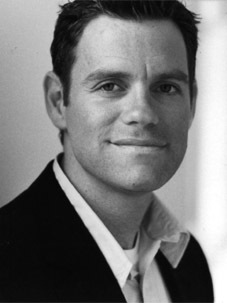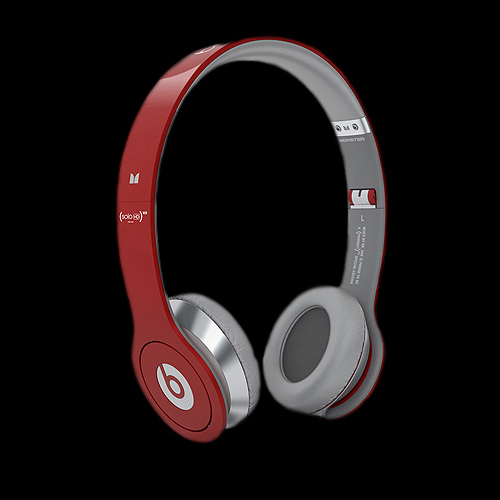
As one of the most experienced casting directors today, James Scully has witnessed countless eras of the modeling sector firsthand. Recently , Lexposure had the privilege of of interviewing him regarding his own career, the casting process, as well as the past, present, and future of the field. The eloquent and candid responses we received came as no surprise, and we hope that our readers will also obtain an in-depth look at the modeling industry as seen through someone who dedicates his days to an industry he loves dearly.
Was casting your first experience in the fashion industry? If not, how were you directed towards this occupation?
Casting no, but show production yes. [In] my freshman year in college, I freelanced for Christina, Gottfried and Loving who at the time did every major show in NY from Perry Ellis to Calvin Klein and special events for Bergdorf Goodman. During my first week of school, there was a board asking for assistants for a show at the store, so I cut class and went. It turned out to be Karl Lagerfeld’s 1st Couture collection for Chanel FW83. He had just signed Ines De La Fressange as the house model and when they arrived together it was pandemonium! The show bug bit me that minute. My first casting job would be 10 years later for Todd Oldham, which was showgirl heaven and a casting dream!
You’ve been credited with helping to brand Tom Ford’s iconic “Gucci Girl” imagery. How was your experience working with Mr. Ford, and what adjustments did you have to make between casting Gucci and YSL for him?
Professionally and creatively one of the best of my career. He loved models and it was so exciting to scout for a new face. He was very definitive about what he wanted and very loyal to his favorites. That’s why we only used 14-18 models at Gucci or YSL. If he liked you, he wanted to see you in several outfits. He also did not want to see hundreds of models, and he left it to me to edit down to the final choices for the last casting which was very small. As he was very consistent in keeping the cast the same for many seasons, we only ever added one or two new models each season; and if you were exclusive you were getting the campaign, so the buzz it created around the girl basically launched her the minute she stepped out on the runway. [Tom] was looking for his idea of perfection and not many girls fit that mold, so it totally retrained the way I looked at models. He also loved diversity, so it did not matter if you were black, Indian, Hispanic, or Asian - as long as you looked rich and expensive you were in.
With Gucci, the casts were small and the woman was about sex. At YSL, the casts were slightly larger. We would share some of the Gucci girls, and there I could cast a wider net for girls that were more frail or masculine or exotic as the YSL girls were more about character.
Harper’s Bazaar was yet another part of your journey. How was serving as bookings editor there different than what you did previously?
I’ve loved magazines since I was a boy and had always wanted to work for one. I was growing tired of producing shows, and when the opportunity to produce shoots and covers came I jumped at it! I assumed they would be the same…boy was I wrong! Bazaar was the best experience and the hardest job I ever had. There were some similarities arranging the teams of stylists, hair makeup, girls, photographer budgets, and that’s where it ends. Once you add locations, agents, planes and egos, everything changes. Fashion shows are live, and you run on adrenaline. If something goes wrong, you fix it fast, on the spot and it’s very exciting. Shoots are like glass houses - one element goes wrong and they break apart. I would usually be coordinating three months worth of issues at a time, and when a shoot falls apart it’s like a hole in a dam…you focus everything on fixing it and then all the other shoots start to fall apart. It took all of my focus and energy every day to make them all work, and it was almost 24-7. If an editor was in South America on a Saturday night and couldn’t make something work, I got the call and the calls never stopped - and that was before cell phones! It was too emotionally draining and intense. I barely lasted two years. That said, I was given the opportunity to work with Patrick Demarchelier, David Sims, Inez & Vinoodh, Tim Walker, Craig Mc Dean, Brana Wolf, Melanie Ward and Kate Betts who I still write for to this day. I wanted to quit every day but would do it all over again. The resources it gave me were incredible.
Do you have a favorite assignment that you have undertaken? Which one and why?
There would be too many too list, but I love working with young designers. After so many years in the business nothing makes me more proud of what I do than to meet a designer who excites me and to call in the favors of my favorite girls, hair and makeup teams and put on a show that helps them get started. If you get good girls, people come round. It was Derek Lam who talked me back into the business after having left a second time, and I was stunned by the support I got from everyone I was able to call to help him. This year he has his first ad campaign, and is opening a store. It gave me great faith in the business again and made me want to dedicate more time to helping new designers get off the ground. Like Derek, Jason Wu owes everything to the girls and people who gave their time, and I’m really happy to have been part of helping him out.
How has the modeling industry, as well as public perceptions of the industry, changed between the beginning of your career and now?
I could write a book on this, but if I can choose the one thing here it is. The ideal that a model was this aspirational, rarified creature who inspired you to want to look better seems to be missing these days. Celebrities have almost completely destroyed both the modeling and fashion business, but I say almost because anything broken can be fixed. It’s very sad and ironic that we are looking to people who look bad, dress poorly and have no manners for fashion direction. The concept of “celebrities are just like us” removed the mystery and glamour of movie stars. Now, there is no difference between Nicole Kidman and Kim Kardashian to the tabloid public. And because it sold, fashion magazines got on that bandwagon for a quick jump on the newsstands, and it had the same effect on fashion. Since there were no more cover girls, editors now needed quick inspiration fixes and in came the 15-year-olds whose careers are over before their first editorials are out. Models that looked like women and women of color were out the door. No woman can relate to a child in a designer outfit - it’s creepy and disconnecting, so the celebrities with their average looks and full figures won. And fashion suffered as a whole for it. What’s personally most depressing is to see the editors I view as my personal heroes being reduced to shooting the casts of Gossip Girl and High School Musical for fashion stories. It must feel humiliating.




 http://www.getmonsterbeatsbydre.com
http://www.getmonsterbeatsbydre.com







Please login or register to add a comment!